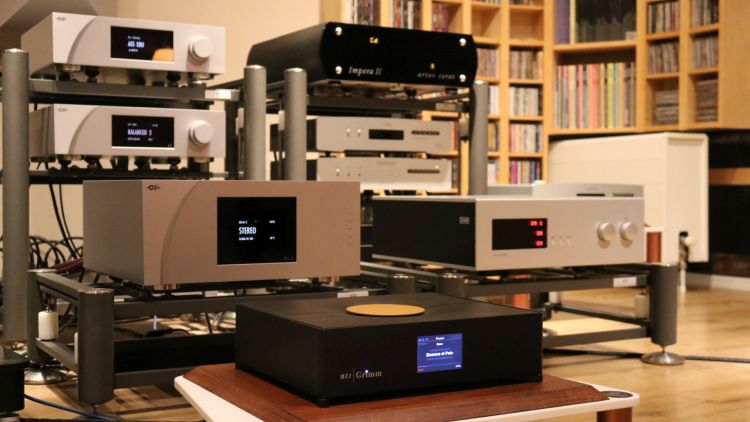
CH Precision L1
Whereas USA-based Mark Levinson and Krell once ruled the solid-state segment of the market with their massively-built amplifiers, this segment now seems to be dominated by the Swiss. Of particular note is relative newcomer CH Precision, of which I own more components, which makes their CH L1 preamp (31.000 euro) a natural choice.
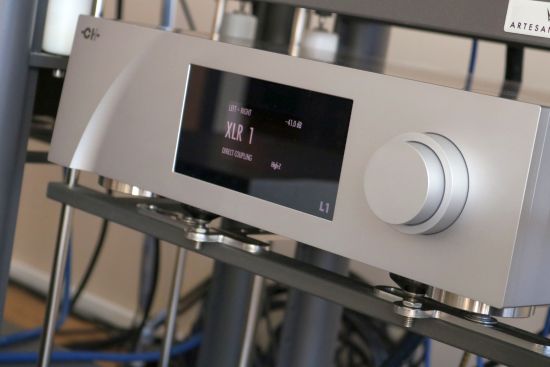
Earlier experiments with the L1 when I first reviewed it in 2020 yielded superbly tight and precise bass but with less weight to the bottom end than with the DAC direct. In my then-system, this was not ideal. As I know now, the right-hand side window area of my listening room canceled out a lot of bass due to phase issues, effectively making the left speaker responsible for a big chunk of the low frequencies. With this issue addressed via window-stiffening bars and other acoustic measures, my room behaves much more linearly and so it was only fair to give the L1 another go.
Rather interestingly, the L1 was the first, and so far only, preamp to not add any softness in the bass or any smoothness anywhere in the frequency range, period. It is relatively a little lean, but like the Spectral 30SV, it does a great job of increasing the refinement and fluidity while actually raising the resolution and increasing the air. In comparison, the C1 DAC by itself (without an analog preamp) sounds dry and a little rough. Indeed, now that my room behaves more consistently, the preamp works very well with my system.
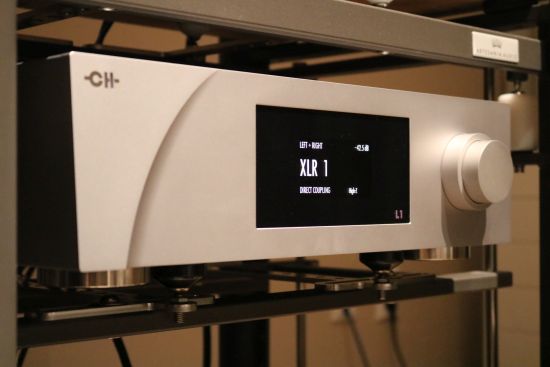
As one might expect from the Swiss, the L1 is incredibly neutral and I dare say that it is even more transparent and revealing than the Spectral and the Impera Reference. It allows a very easy assessment of cables, accessories, and other connected components, precisely because it adds so little itself. But it’s not exactly a voluptuous, full-blooded, or otherwise particularly romantic-sounding preamp. It’s not that it inhibits smoothness, richness, or romance, but it absolutely does not add any of this by itself.
If the objective is to have the sound be as unadulterated as possible, the L1 is the best I’ve heard so far. And for that reason (as well as its extensive connectivity and configurability), I like it a lot. On the other hand, while the L1 is superbly fluid and refined and it has zero edge or other negative transistor traits, it doesn’t try to emulate tubes. But should it? In any event, it does not sound as full-bodied and rich as the Spectral, and neither does it provide the real flesh-and-bone, living-and-breathing, in-your-room kind of performance that the Aries Cerat preamps do.
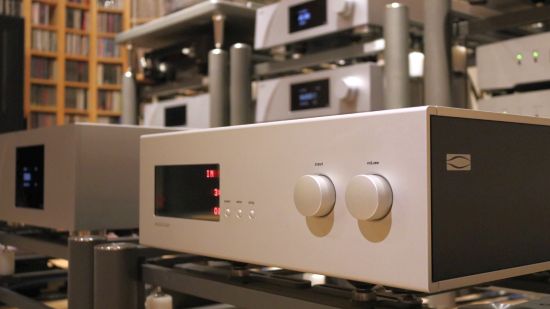
Soulution 725
Of course, when you say “Swiss Amplifiers”, there is no escaping Soulution. Or Nagra and Dartzeel, for that matter. Alas, I have not yet gained any personal experience with the last two, but I have some experience with Soulution. First, I have heard the 711 power amplifier on many occasions in audio buddy Niels’ setup where I have compared it with the CH A1.5, and with combined forces (not only metaphorically, but given the amplifier’s 65KG’s, physically, as well), I was also able to hear the 711 in my own system.
Having read predominantly raving reports about the Soulution 725 preamp, I was more than curious to hear it for myself. If what I read was true then the 725 should retain all of the C1 DAC’s body whilst offering impressive dynamics and slam. The main detractor is that at 42.000 for the base model, the 725 is the most expensive preamp in this group. Not that the other preamps in this article are particularly affordable… Although, the 14.200 euro Aries Cerat Incito S does offer great value for money. In any event, when Ray of Welcome To Playground offered me the chance to hear the Soulution 725 in my system, I jumped on it!
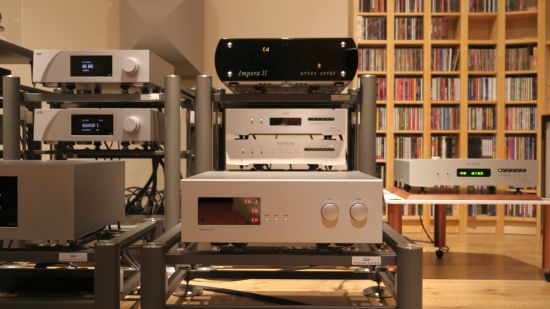
As anticipated, the 725 did indeed turn out to have more robust bass than the CH L1 but it is also a little darker in the treble. My initial impression was that this preamp does indeed do the best job of all preamps in this group to retain the C1 DAC’s basic character in terms of bass solidity and dynamic posture whilst also offering more fluidity and flow. Upon closer listening, however, I hear that the bass is actually bigger and fuller than with the DAC-direct route, a little bit less tight, and with a slightly lower level of definition. In fact, the 725’s bass has a lot in common with how I perceive the 711 power amp’s bass: big and ballsy and very bold but a little lumpy, less nimble/agile than the CH. In terms of focus, soundstage depth, and soundstage width, there is not much between the three transistor preamps and, well, none of them image quite as widely, or as deeply, as the Impera Reference, or the Incito S, for that matter.
One of the things the 725 does very well is to lend body and substance to acoustic sounds. Here, the L1 has better transient snap and higher speed but at the expense of some fullness. For instance, with the 725, acoustic guitars possess a deeper tonal body but rounder and less crispy string snap. Both aspects are important factors in making recorded music sound realistic but which is the more important aspect will be a very personal matter.
On the whole, the 725 has a modest amount of warmth and a gently relaxed presentation. It is admittedly less articulate and bright than the CH L1 but no less resolute and also very neutral and certainly not rosy, overly rich, or rounded. But neither does it cross over into the rough and square-ish side. The treble is not as silky or as airy as that of the CH or the Spectral but very pure and well defined without being hard. Truthfully, even though one could say that the L1’s frequency curve seems to be tilted slightly up and the 725’s curve slightly down (both of which are technically not the case), the overall perception is that both preamps offer technically superb performance with a similarly high degree of neutrality.
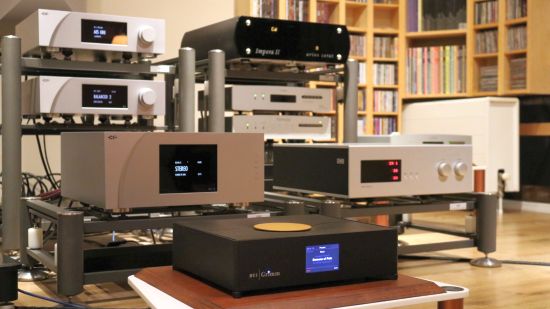
The 725 left me suitably impressed, but not really wowed. Just like the other contenders in this group, it makes my system sound better than with the DAC connected directly with the added benefit of remaining admirably neutral in the process and indeed retaining all of the bass fulness and slam. But ultimately, I felt more compelled by the CH’s refinement and utter precision and the Spectral’s fluidity and flow.
What about brand-matching system synergy? Would that explain why the L1 works better than the 725? While I won’t rule out that this can be a factor, my personal experience has always been that systems need to be balanced on the whole in a given acoustic situation and that comprising it of same-brand components is no guarantee of ideal sound. In any case, the Spectral also works incredibly well and so do the Aries Cerat preamps. More than anything, though, it is a matter of personal preference.
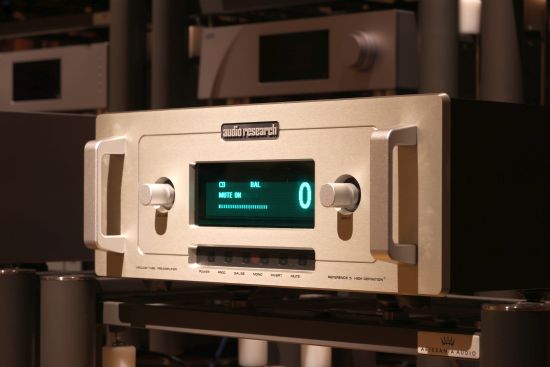
Audio Research Ref5
For the final preamp, we land back in the tube department with the long-established Audio Research. I tried to get the current Ref6 model in for review, but just like the latest Spectral preamp, it wasn’t available. In its place, Niels came to the rescue once again by offering to bring his Ref5 along. If you don’t count the Ref5SE model, the original Ref5 is Audio Research’s second-last model. But as I already knew from earlier experience, the Ref5 is not to be dismissed. As the built-in hour meter on the front panel display shows, this sample has seen very little use. I forget the precise number but it was only a few hundred hours which means that it should be at its peak performance.
The Ref5 offers a truly impressively wide and deep soundstage, larger even than that of the Aries Cerat preamps! Along with this, it offers remarkably high resolution, ultra-airy treble, great fluidity, and immense refinement. This preamp has the kind of explicitness and overall level of detail that one does not normally expect from tubes. Yet, it does not sound cool or cold. Its overall sound leans in the direction of the Spectral, with a very similar level of liveliness and overall dynamic behavior.
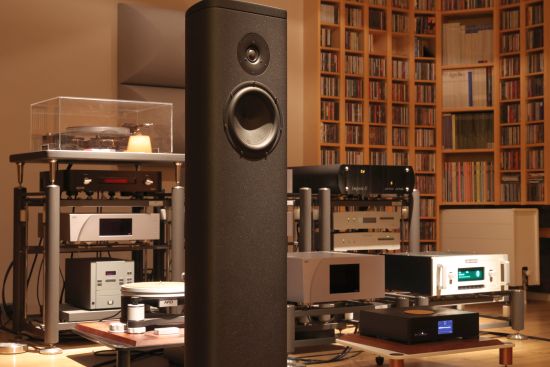
In spite of having a smooth and gently warm delivery, the Ref5’s timbre is a little lean (more so than the CH L1) which can lead to it sounding synthetic at times, at least in the context of my system. Likewise, this leanness leaves it lacking solidity and impact at times. While there is a lot to enjoy with the Ref5, I think it’s fair to say that it is not quite as natural and acoustically convincing as the other contenders.
Just like the other preamps in this group, but more so than the solid-state contenders, the Ref5 helps my system achieve a juicier, more liquid, and more organic performance. The Audio Research works especially well with smooth jazz and soul and singer-songwriter kinds of music as well as loungy electronic music, but contrary to the Aries Cerat Impera Reference, it fares less well with rock music or other music that relies more heavily on rhythm and impact. The main aspect where the Ref5 is lagging behind the others is its pacing/groove and the overall bass performance.
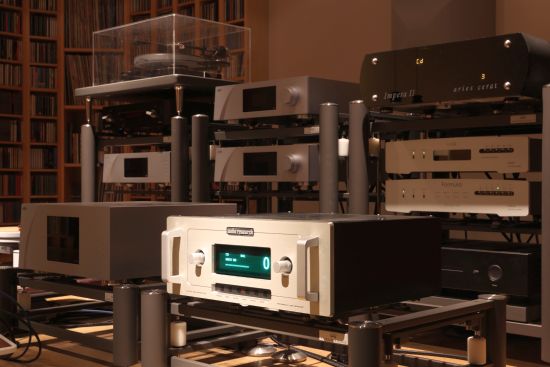
What I really like about the Audio Research preamp is its facilities. It has a multitude of inputs and all the functionality you need, and everything can be controlled from the front panel and its large display or via the remote control. This contrasts starkly with the bare-bones simplicity of the Aries Cerat preamps.
While the bass attains a high level of articulation once the preamp is fully warmed up (after an hour), the overall balance remains on the sophisticated and airy side and the preamp never quite achieves the impact, drive, fullness, and slam of the Incito S, let alone the Impera Reference.
Conclusion
As this test illustrates, the addition of a preamp has a major effect on the system’s overall performance. While it can be argued that, firstly, every preamp brings some character of its own to the table, secondarily, tubes and transistors remain different camps, and thirdly, one can have personal preferences with respect to which sonic attributes are most important, each of the contenders proved to be quite transformative for the end result. In most cases, you use an amount of absolute accuracy but in all cases, you gain fluidity, flow, and a more emotional performance. Especially with tube preamplifiers, that latter aspect is not to be underestimated.
As my tests illustrated, a very good preamp will invariably bring advantages. But I should add that, unfortunately, the cost is a factor. This is the big elephant in the room. In all fairness, I can get behind the argument that it is better to use a very good DAC with its built-in volume control, even if it is of the digital kind, than to add an inferior analog preamp to the chain.
This was an exercise in assessing the influence of various preamplifiers in a previously preamp-less system. It was not meant as a preamplifier shootout and as such, I won’t proclaim a winner. But I hope to have provided enough handles for prospective buyers to be able to decide for themselves.
I guess this was my very long-winded way of saying that, YES, adding a preamp to a digital-source system most definitely has considerable benefits!
Videos on the Hifi-Advice YouTube Channel
Aries Cerat Helene and Incito S preview
HFA visits Callas Audio
HFA YouTube Main Page
External Links
Aries Cerat
Audio Research
Ayon
CH Precision
Soulution
Spectral
Special Thanks
Ultisone (Aries Cerat Distributor for the BeNeLux)
Callas-audio (Aries Cerat Dealer for the Netherlands)
Welcome To Playground (First-Class pre-owned High-End Audio equipment)

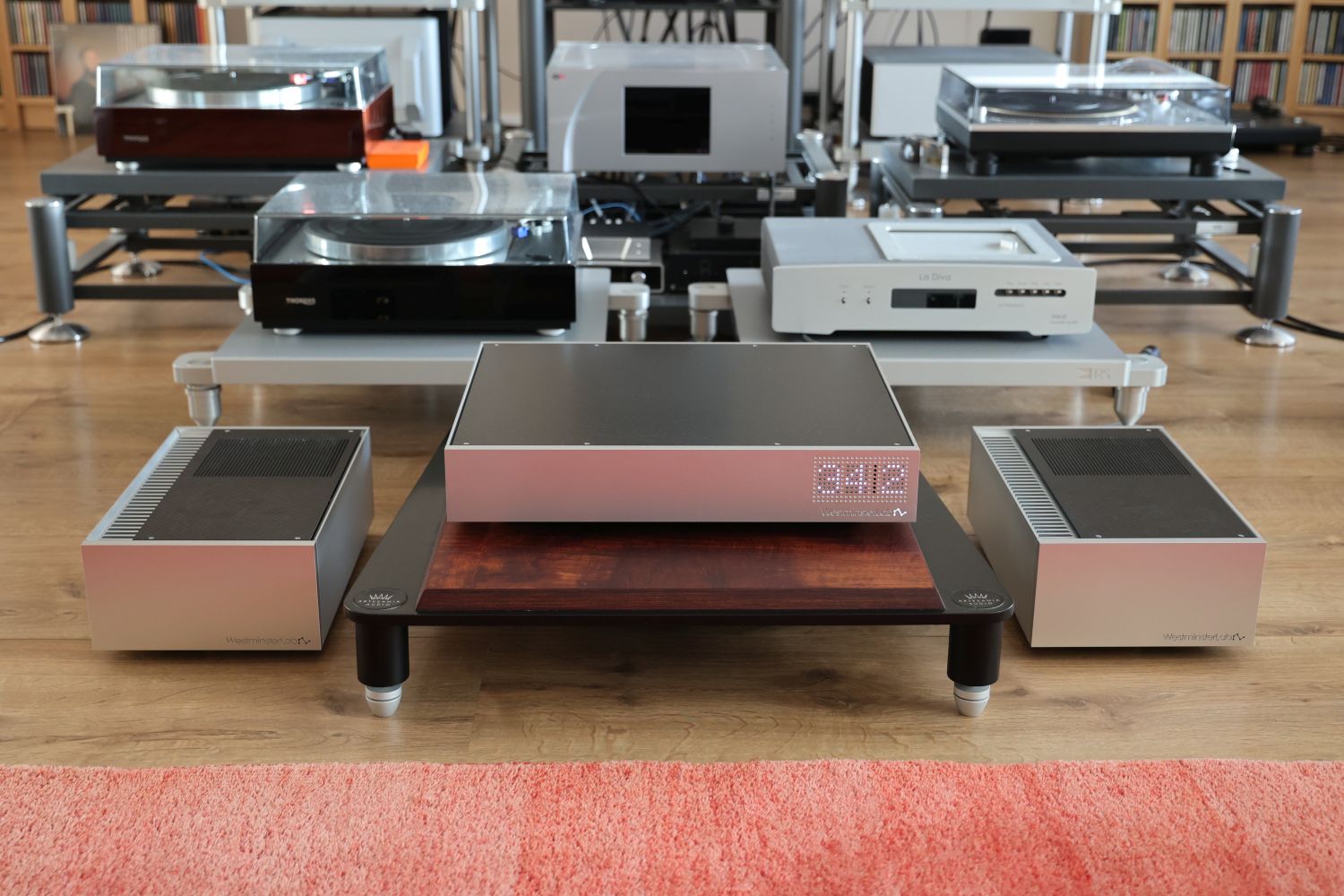
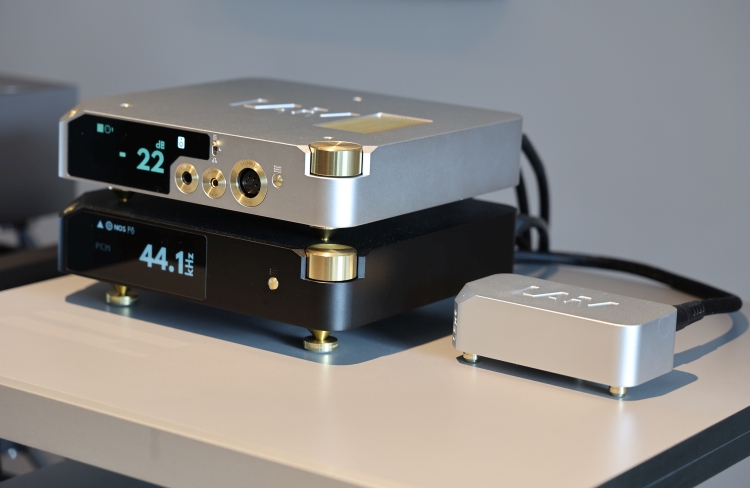
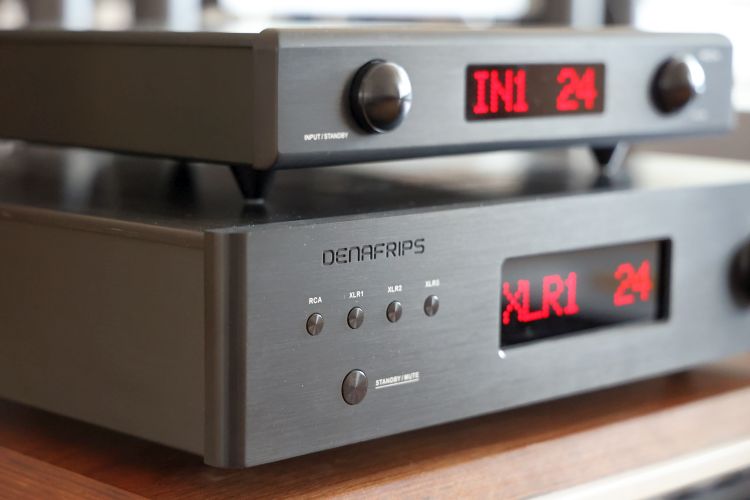
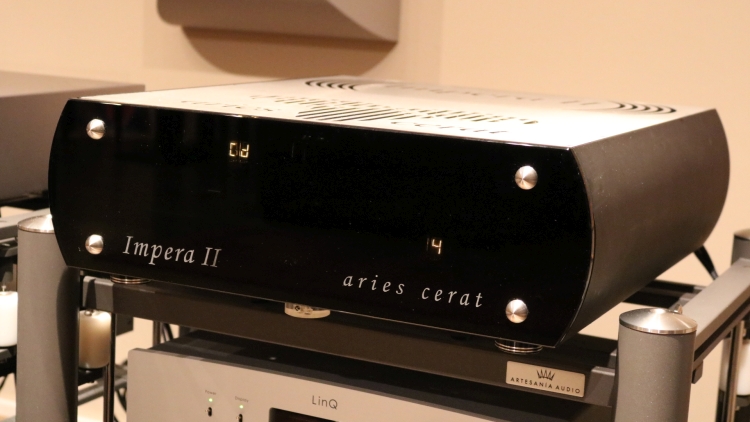
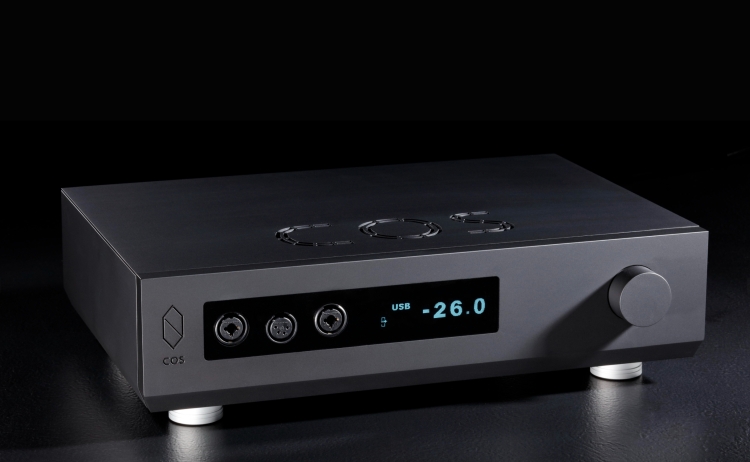
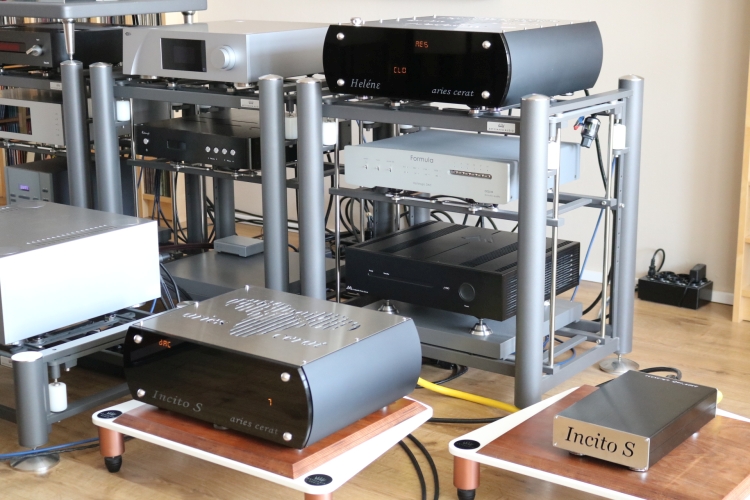
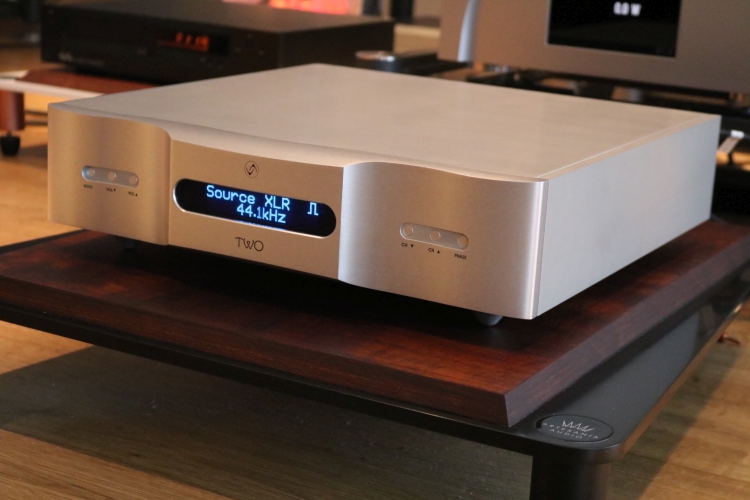
Thanks for this very interesting review. It made me put away thoughts that my VTL 7.5 III should be sold. No, it’s a keeper although I’m very happy with the preamp performance of my Lumin P1.
Very important topic. Thank you for sharing. I can understand the benefits of adding a dedicated high performance preamp to a digital-source system. Is this also the case with vinyl playback? Did you find audible differences when playing vinyl using the Stealth preamp vs. the rest of the reviewed preamps?
Good question! Well, I was pleasantly surprised when I used the CH L1 instead of the Stealth. I was expecting a lean and perhaps even dry or technical / non-analog sound but what I got was better than the Stealth in very nearly all respects, especially air and refinement but even in terms of soundstage depth, bass conviction, and fluidity. Of course, the Stealth does sound considerably fuller but on balance I much prefer the L1.
What is your take in using the Grimm Audio MU1 as volume control and leaving out a dedicated preamp?
While I have not tried this with the Grimm, and it might work very well, I suspect that it would not yield better results than when using the C1’s hybrid analog/digital volume control. Going from my experience so far, any digital volume control just won’t yield the same result as adding a state-of-the-art analog preamp.
Christian a great idea for an article thank you and some nice comparisons. And nice to read something about Spectral for such a longstanding and important American manufacturer they seem to get zero press. I am a preamp guy all the way and tubes please.
That being said I was ferreting out some system noise a few months back so did some bypass tests. With my streamer, Auralic Aries Mini, controlling volume and running my Dac direct to my amp the sound was much better than expected. I certainly missed some of the body and bass of my preamp but transparency was quite excellent.
I wouldn’t want to be without a preamp but it’s nice to know that option is there!
Cheers,
Jon
Hi Jon, indeed, in many cases, an analog preamp is no longer a hard requirement. But there is an important difference between requirement and benefit. 🙂
It is a very good thing to compare the products between them. This corresponds more to the reality of an audiophile. Regards
Hi Christiaan, maybe you should review the current AR Ref 6 SE instead of the rather old Ref 5 one day. Regards
Hi Oliver, I tried to get the Ref6SE in for review but it was not available. The Ref5 was my makeshift solution to that problem.
The room in that first photo hurts to look at. I can hear the reflections from here, you might as well put $150 speakers in there.
There are no first reflections here. I think the photo creates the illusion that the speakers are enclosed between hard walls which they are not. They are positioned nearly halfway into the room (over 3 meters from the rear wall) and past the horizontal position where both of the side walls cave out and the room becomes several meters wider. The corner in the right rear side (over 4 meters from the sweet spot) is heavily treated with bass traps. See the system setup for a better impression.
Hiya Christiaan after getting audio gd master 1 pre as you rated it highly and after hearing yourself and others keep on banging on about benefits of a good analog pre I managed to source a holo serene omg I now get all ya 🤣 your not all that crazy after all now I need to take a deep breath and spend some on cables 😫 they seem ridiculously expensive 😳
System Mano ultra 3 and holo may dac2 serene atc active tower 50s xlr cable all van damme
What a great read thank you. My system is Ch C1.2 +X1 Powersupply + CH m1.1 stereo power + Sonus Faber il Cremonese ex3me + Kubala Sosna Elation Cables. I am so happy with the set up and did not think to add a pre amp up to reading your article 🙂 What will be the benefit if i add L1 to my system? Do you think is it more benefitial or adding another M1.1 to go with mono is? I like refinement,detail and soundstage depth most in any system. Thank you and best…
Hi Ahmed, it depends on what you are after. An extra poweramp will give you more authority, realism, and other benefits. Adding the L1 will bring more fluidity, air, and refinement. See also my initial C1 + A1 review in which I compare the difference between one or two A1 amplifiers, as well as my L1 review in which I dive deeper into what makes the preamp so special.
Thank you i will look at your other post now.
Mos people using C1.2 as pre with M1.1 or A1.5 says i sould decrease the gain of M1.1 at least to -6db in order to şisten the sweet spot analog section of C1.2. Is it parallel with your findings? They refer to CH rtech servise that to reduce amp gain to -6 db will make you listen c1.2 in its optimal range( -15 to -5 db)
Yes, to get the C1 working in its ideal upper volume range, you can indeed lower the gain on the power amp(s), however, that will have its own effect, reducing the sense of snap and attack. The sound will be more refined and fluid but relatively less foreful. There is no true right or wrong, just use what you find sounds best.
Christiaan,
Thank you for your fascinating in depth analysis. What is your take on using the Soulution 760 as volume control, leaving out a dedicated preamp? As I have been using an Aurender W20SE & haven’t played a CD in almost 2 years, I recently replaced my Ayre KX-R Twenty Preamp / VX-R Twenty Amp with the 760 DAC and 711+ amplifier and note no dryness or edge in the high end and mid-range with the added benefit of a deeper, tighter gripping bass. My understanding is that much of the 760’s design is based on the 725.
Hi Lloyd, alas, I have no personal experience with the Soulution 760 DAC. I know from my C1.2 DAC that it sounds superb without an analog preamp, but more fluid and refined with the L1 preamp (albeit slightly more light-footed). Given that the 760 has a digital volume control, I imagine it would provide similar benefits and downsides.
In other experiments, I repeatedly found that adding an analog preamp still brings gains, even if the DAC contains a fully preamp-worthy output stage. Although, there is a nuance to be made, of course, as we are looking for a balance, and it depends on which aspects of sound you value most. Adding a preamp also adds complexity and more influence from cables.
If you are not hearing any dryness, roughness, or lack of resolution at lower volume levels, and you feel the sound is fluid and refined enough, then it might nog be worth adding an analog preamp.
You may also want to read my Playback Designs and Vermeer Audio reviews, for more impressions of using built-in volume control.
Another excellent preamplifier based on a very forward-thinking design (described at length in its owner’s manual) is the CODA 07x Preamplifier, which I use in conjunction with its companion–piece CODA S5.5 Precision Class A Stereo Power Amplifier (50 Watts RMS into 8 ohms / 100 Watts RMS into 4 Ohms PER CHANNEL). I will be teaming this pre-amp/power amp pairing with the latest Playback Designs MPD-8 Dream DAC.